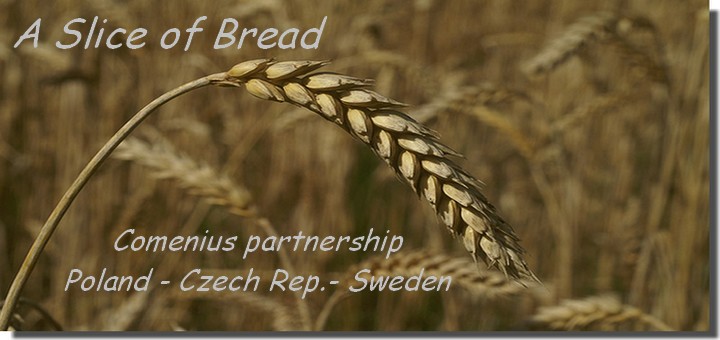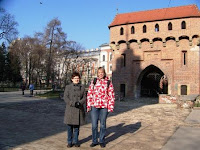
Jastrzębie Zdrój jest przemysłowym miastem średniej wielkości. Nasi ojcowie pracują głównie w kopalniach węgla. Partnerskie szkoły znajdują się w okolicach rolnych. Większość rodziców uczniów prowadzi gospodarstwa rolne. Dlatego szwedzcy uczniowie są ciekawi, jak wyglądają polskie i czeskie farmy. W naszej szkole Małgosia przeprowadziła ankietę wśród swoich sąsiadów. A oto wyniki.
Jastrzębie Zdrój is a medium-size industrial town. Our fathers work mainly in coal mines. Our partner schools are situated in the rural areas. Most of students’ parents run farms. That’s why Swedish students want to know how Czech and Polish farms look like. Małgosia from Polish school carried out a survey among her neighbours. Read the results:
Swedish questions:
*Cattle and dairy farms:*
What are most of the farmers in your area: dairy farmers, grain farmers or stock breeding farmers?
What type of production do you have?
Do you run your farm all by yourself or do you have any employees?
What are your daily working tasks?
What are the advantages versus the disadvantages about your job?
Do you cooperate with any other farmer?
Do you have another job in addition to your farm?
How many animals do you have?
Do you know any farms that are run ecologically?
What are the requirements to be qualified as an eco farm?
Do you think eco farmers will be more common in the future? Why/ why not?
Do you get any subsidies from EU?
Polish answers:
In our area most of farmers run grain farms or stock breeding farms. We produce grains (rye and wheat) and we breed swine. The farmers don't employ workers. The children's job is to help feed the animals. The farmers' job gives satisfaction and income; on the other hand, farmers don't have much spare time and there is a lot of stress because the crop and the weather are unpredictable. In our area farmers don't co-operate with each other because they all have another job. On average we keep 25 animals. We don't get any subsidies from the European Union. We don't know anyone who runs an eco farm, and we don't know what the requirements are for qualifying as an eco farm. We hope eco farms will be more.
W naszej okolicy gospodarstwa rolne specjalizują się w produkcji zboża i hodowli trzody chlewnej. Przeciętne gospodarstwo liczy od 1 do 6 ha. Rolnicy prowadzą gospodarstwa samodzielnie. Do obowiązków dzieci należy karmienie zwierząt. Zaletą prowadzenia gospodarstwa jest satysfakcja i korzyści finansowe a wadą jest brak czasu i ryzyko, ponieważ zbiory i pogoda są nieprzewidywalne. W najbliższej okolicy nie współpracujemy z innymi rolnikami, natomiast pracujemy także w innych zawodach. Posiadamy przeciętnie 25 sztuk zwierząt. Nie znamy nikogo, kto prowadzi uprawy ekologiczne. Nie wiemy jakie są wymagania, aby gospodarstwo zostało zaliczone do ekologicznych. Nie otrzymujemy subsydiów z Unii Europejskiej. Mamy nadzieję, że będzie więcej ekologicznych gospodarstw.
Dziękujemy Małgosi i jej sąsiadom za pomoc.
































 In Sweden we have a lot of wild animals but they live in different places in Sweden. In the south we mostly have roe deer, wild pigs and the moose that is the king of the Swedish forest. We have rabbits, foxes and a lot of small animals. In north Sweden we have bears, wolves and lynxes. Up there are many moose and some hunters from south Sweden go there to hunt because the moose is much bigger in the north. All the animals I have mentioned do we hunt but not all the time. In the autumn and winter are you allowed to hunt the moose and roe deer. You can hunt foxes in the summer. But some animals are you not allowed to hunt because there are not so many of them left, like the wolverine that got protected in 1969. Most of our animals are nice and don’t hurt anyone. But there are some animals that can hurt you really bad like the viper that is a poisonous snake, but there are not many left. They are nearly exterminated. And some animals can get angry and attack you if they feel threatened such as wild pigs, bears, wolves and even moose especially bears because they have such a temperament. These are some of the Swedish animals. My favorite is the moose because it is nice and its meat is very good.
In Sweden we have a lot of wild animals but they live in different places in Sweden. In the south we mostly have roe deer, wild pigs and the moose that is the king of the Swedish forest. We have rabbits, foxes and a lot of small animals. In north Sweden we have bears, wolves and lynxes. Up there are many moose and some hunters from south Sweden go there to hunt because the moose is much bigger in the north. All the animals I have mentioned do we hunt but not all the time. In the autumn and winter are you allowed to hunt the moose and roe deer. You can hunt foxes in the summer. But some animals are you not allowed to hunt because there are not so many of them left, like the wolverine that got protected in 1969. Most of our animals are nice and don’t hurt anyone. But there are some animals that can hurt you really bad like the viper that is a poisonous snake, but there are not many left. They are nearly exterminated. And some animals can get angry and attack you if they feel threatened such as wild pigs, bears, wolves and even moose especially bears because they have such a temperament. These are some of the Swedish animals. My favorite is the moose because it is nice and its meat is very good.






















